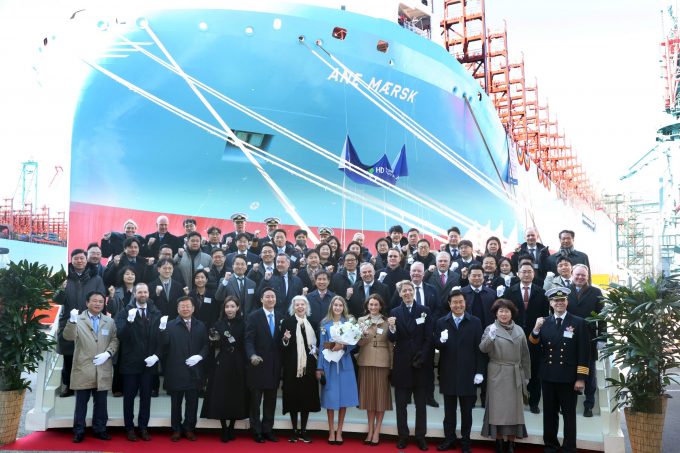Threat of rising oil price adds to frustration for crisis-hit supply chain chiefs
New warnings from the World Bank of surging oil prices, adding to the continuing instability ...

A record 41 containerships, with a capacity of some 300,000 teu, were delivered last month, including eight of more than 15,000 teu.
However, this eye-watering capacity record for newbuild deliveries is unlikely to last very long, given that a further 2.8m teu of cellular tonnage is scheduled to hit the water this year.
In fact, the total for newbuild container vessels expected to be delivered this year is equivalent to the current capacity of the fourth-largest ocean carrier, Cosco, which itself has an orderbook of 790,000 teu – dwarfed by CMA CGM’s 1.1m teu on order and MSC’s 1.4m teu.
“So far, the market has been able to absorb these capacities without too much trouble, helped by the problems in the Red Sea,” said Alphaliner.
However, the consultant said it “remained to be seen” whether the liner industry would be able to cope with the huge increase in capacity when the current disruptions ended.
Indeed, prior to the Suez Canal omissions and the requirement for more tonnage to mitigate the longer transit around Africa, the supply and demand balance was trending heavily against the carriers, with growth demand forecasted to be weak, at just 3-4%, in contrast to supply growth at circa 10%.
So far this month, some 75,000 teu of newbuild capacity has been delivered, including the 15,249 teu Zim Mount Olympus and the 15,600 teu MSC Adya.
In addition, Maersk has received the first of a series of 12 methanol-dual-fuel newbuilds, the 16,592 teu Ana Maersk, which has been deployed on the 2M’s AE7/Condor Asia-North Europe loop, starting its maiden voyage from Ningbo yesterday and arriving at Felixstowe towards the end of March.
Meanwhile, according to Alphaliner’s biweekly inactive containership fleet update, there are now no idle ships of more than 12,500 teu, following the reactivation of two ultra-large container vessels into service during the past two weeks.
“Additionally, a significant amount of capacity was also reactivated from drydock to further accommodate the inflated demand for shipping capacity during this period,” added Alphaliner.
Moreover, the demand for extra tonnage, as carriers rejig their networks to include the longer voyages around the Cape of Good Hope, has stymied both the sales and purchase (S&P) and demolition markets, as shipowners opt to keep hold of their assets in a rising charter market environment, rather than sell.
Against this background, Alphaliner reported “very few transactions” in the S&P market with, for example, the champion buyer of second-hand containerships MSC being linked to the purchase of three NSB Group ships it has on charter, the 6,336 teu 2005 – 2007-built MSC Carouge, MSC Lausanne and Buxwave.
Elsewhere, apart from the scrapping of two 30+ year-old feeder vessels in the past fortnight, the demolition market is virtually dead.
“Clearly, the current disruptions in the Red Sea and their various consequences are taking their toll on the recycling activity, with owners of vintage ships preferring to keep trading their vessels at a profit in a buoyant charter market,” said Alphaliner.
Comment on this article